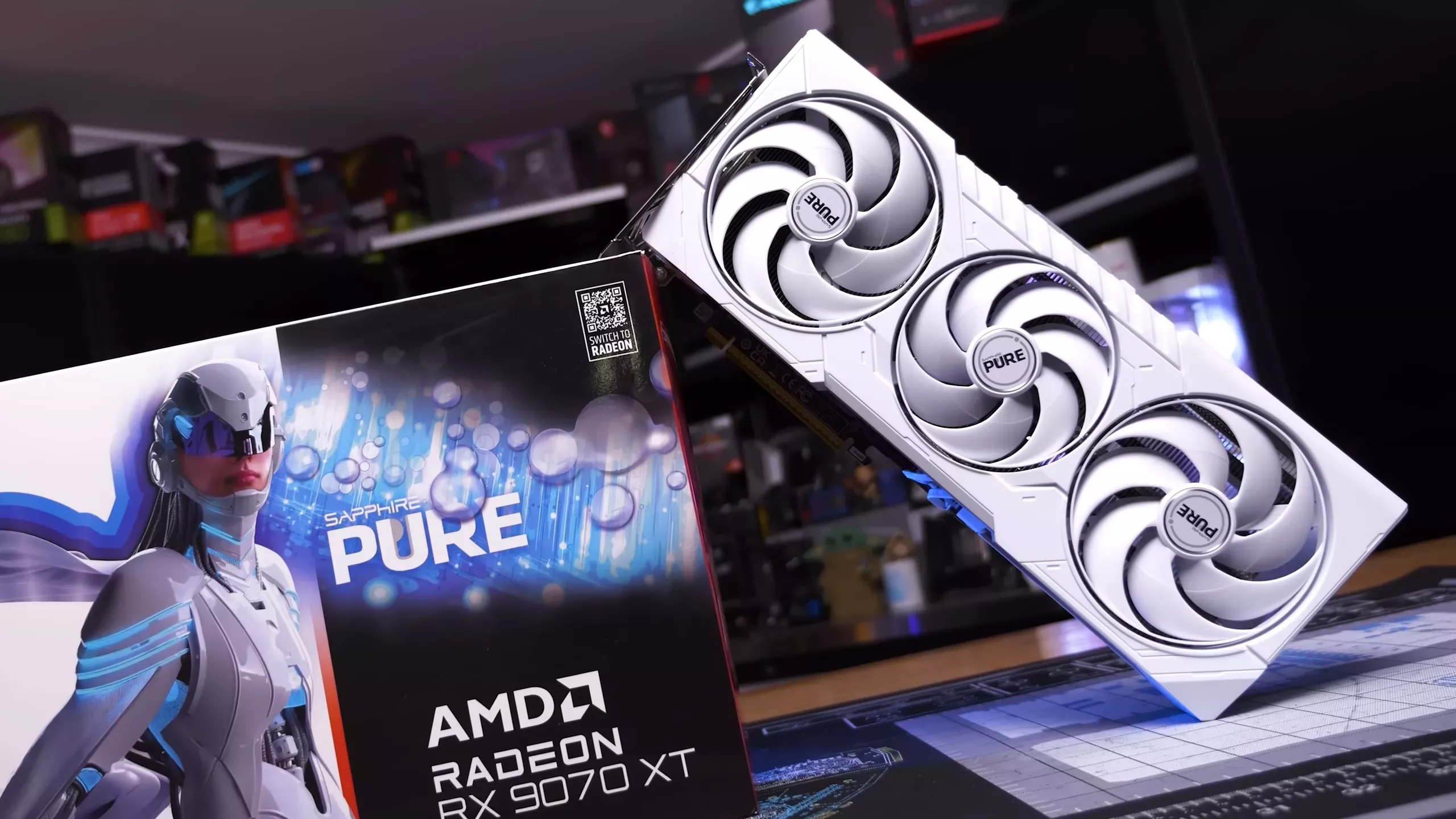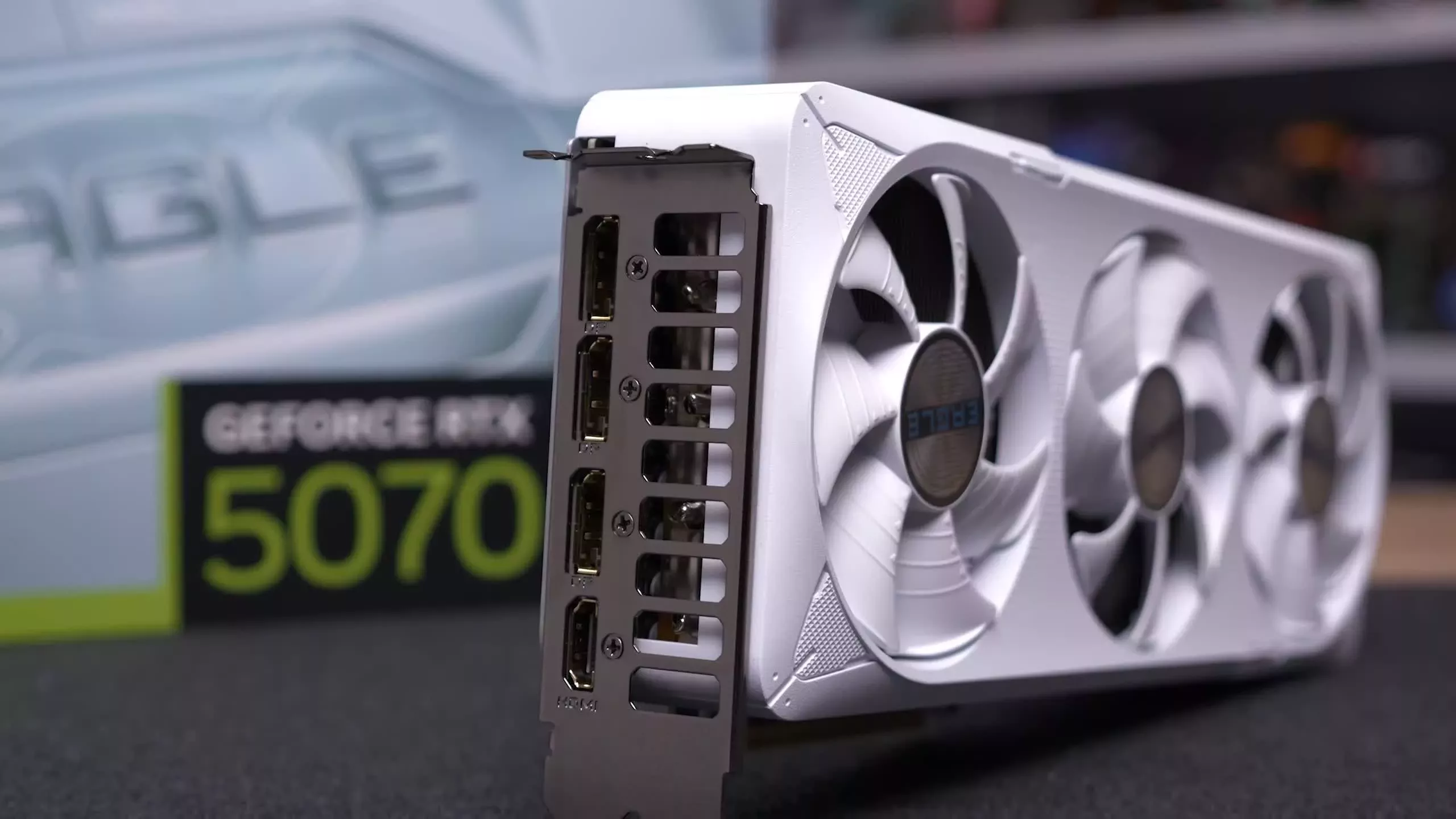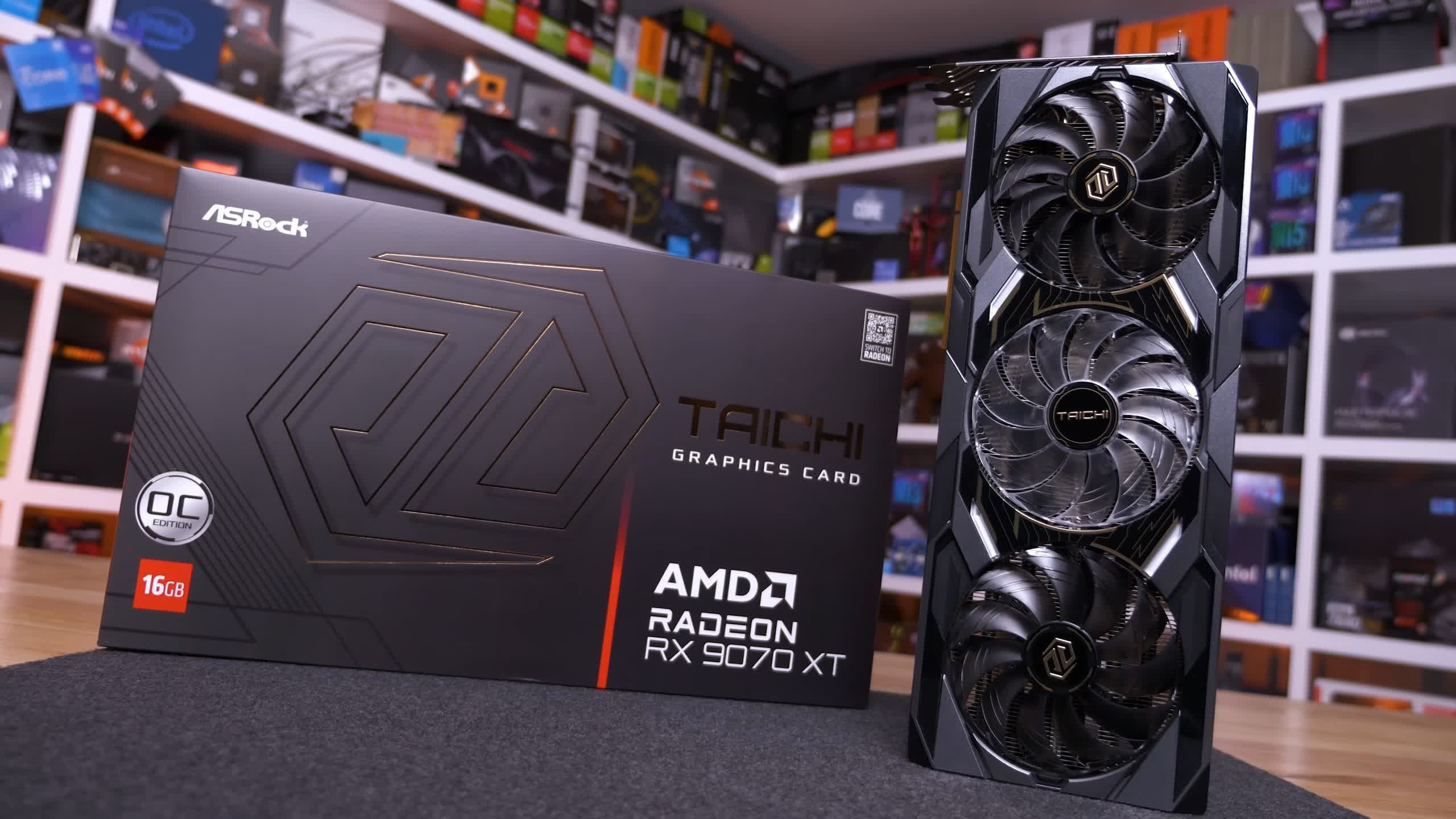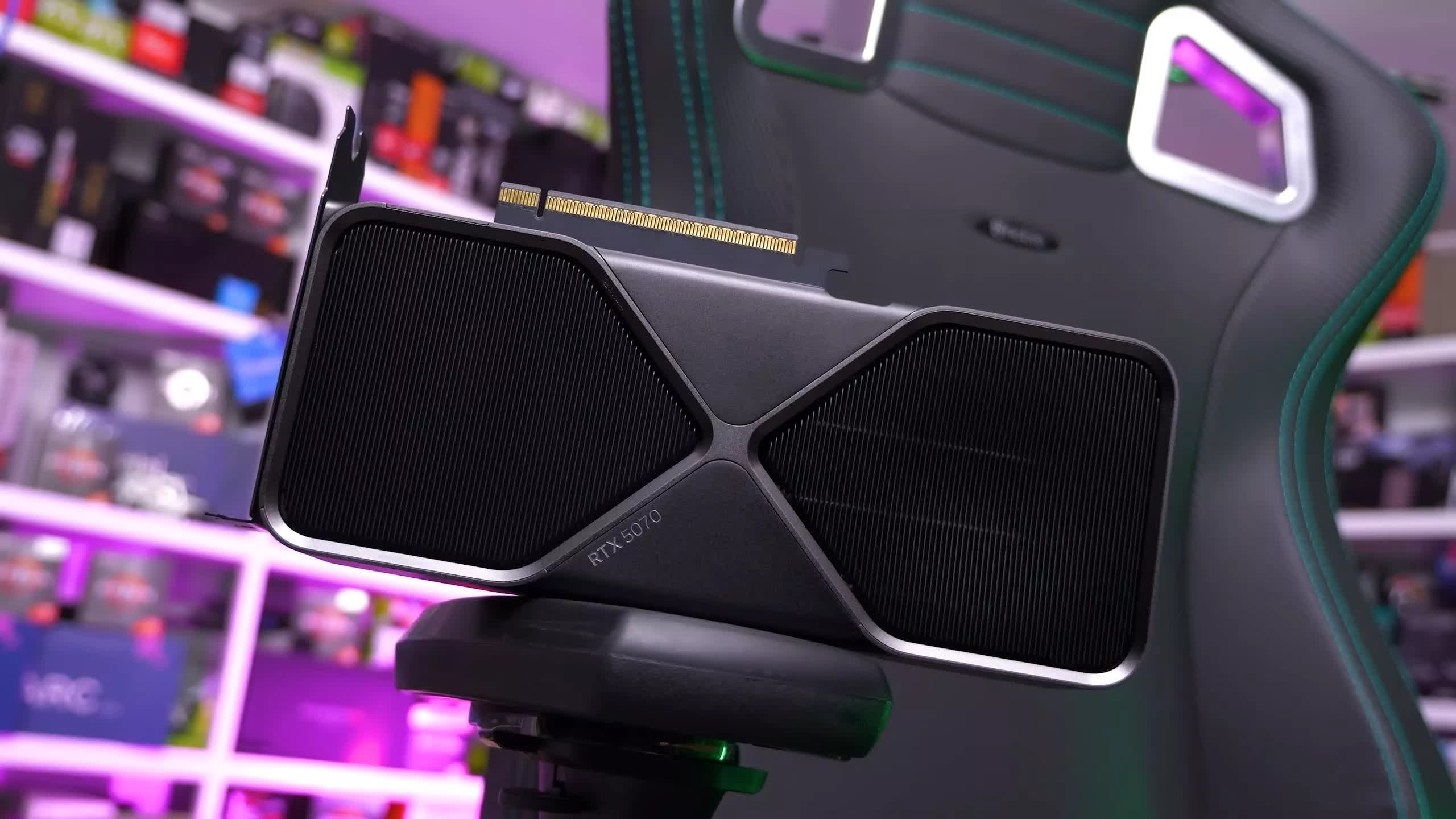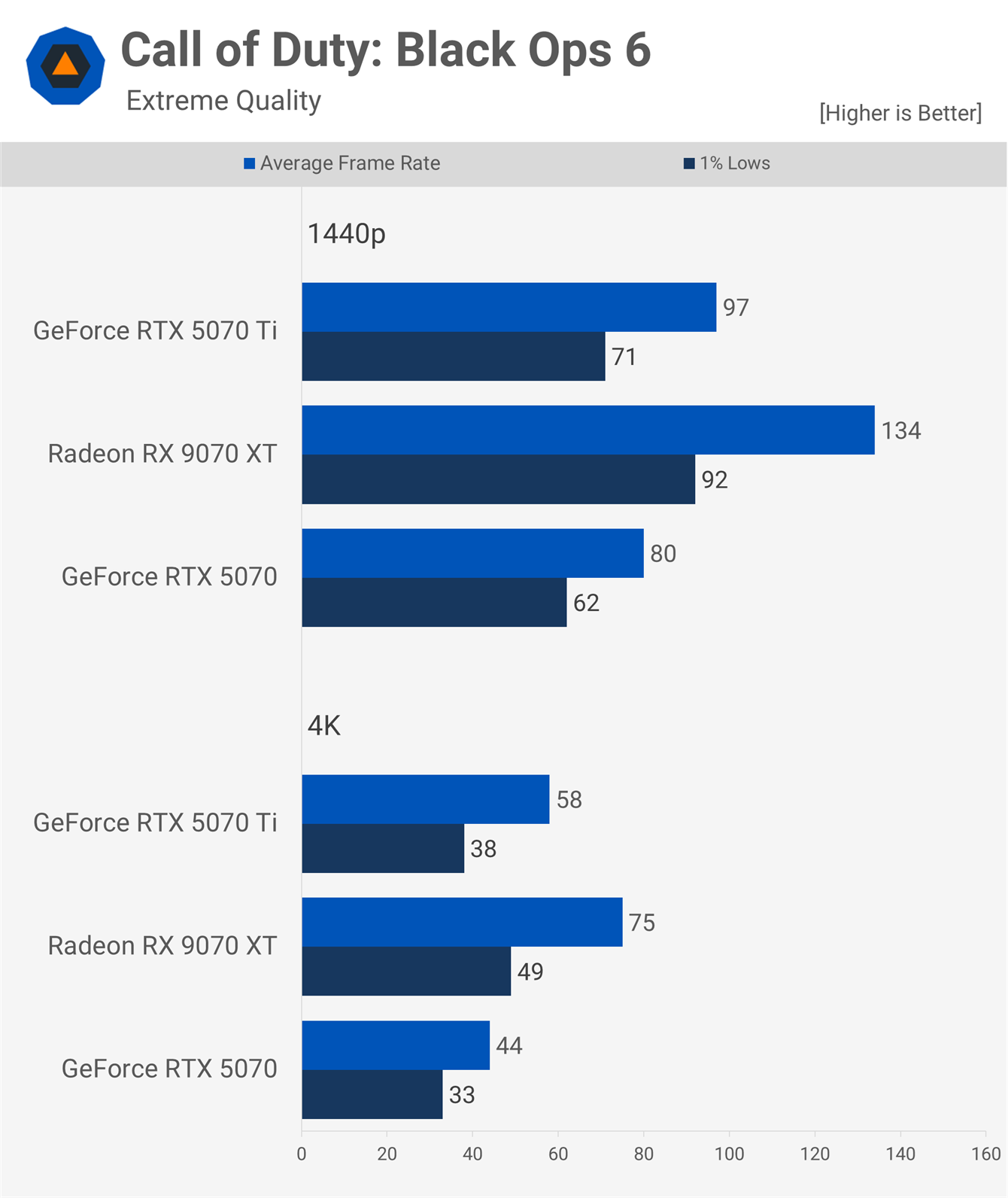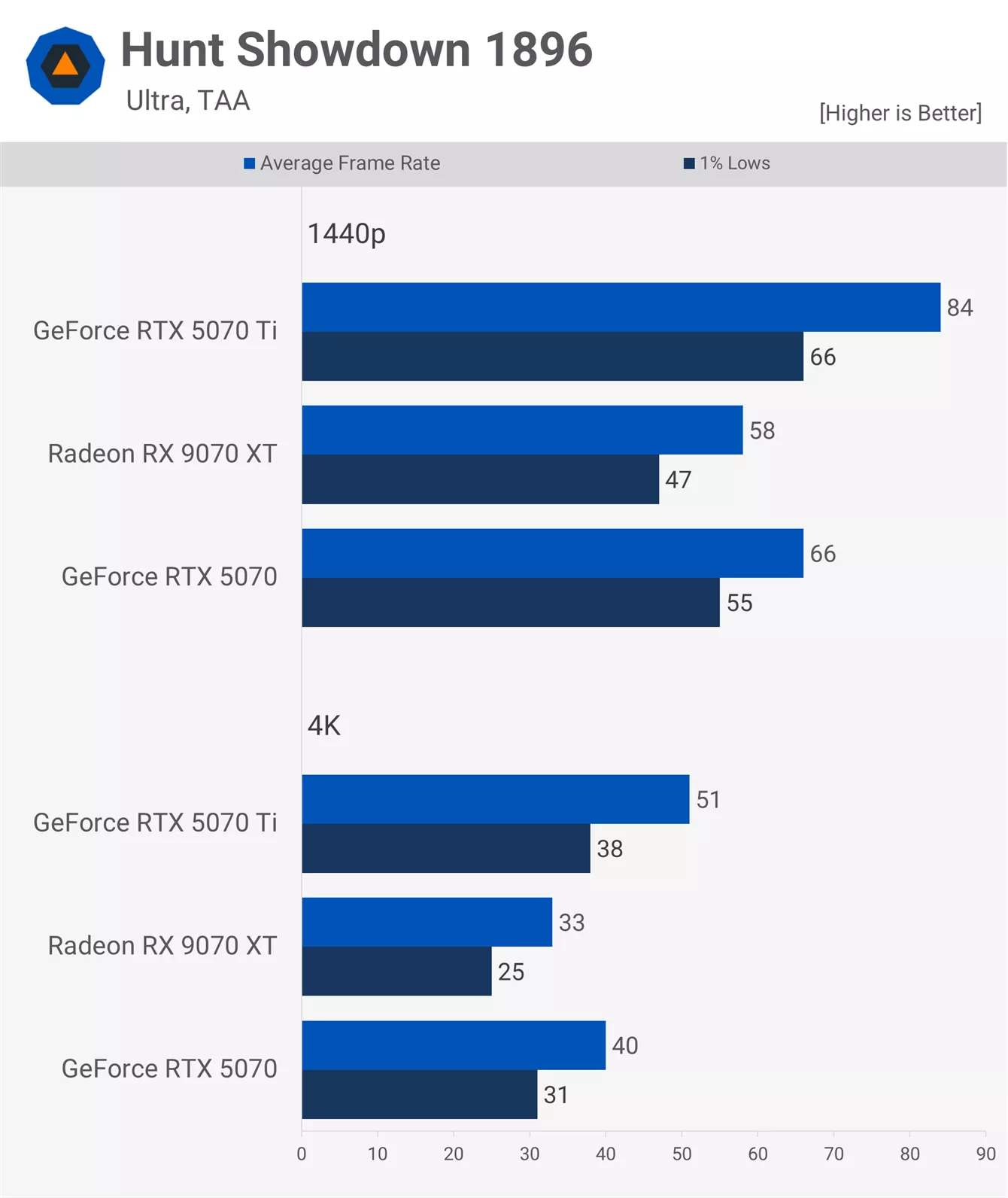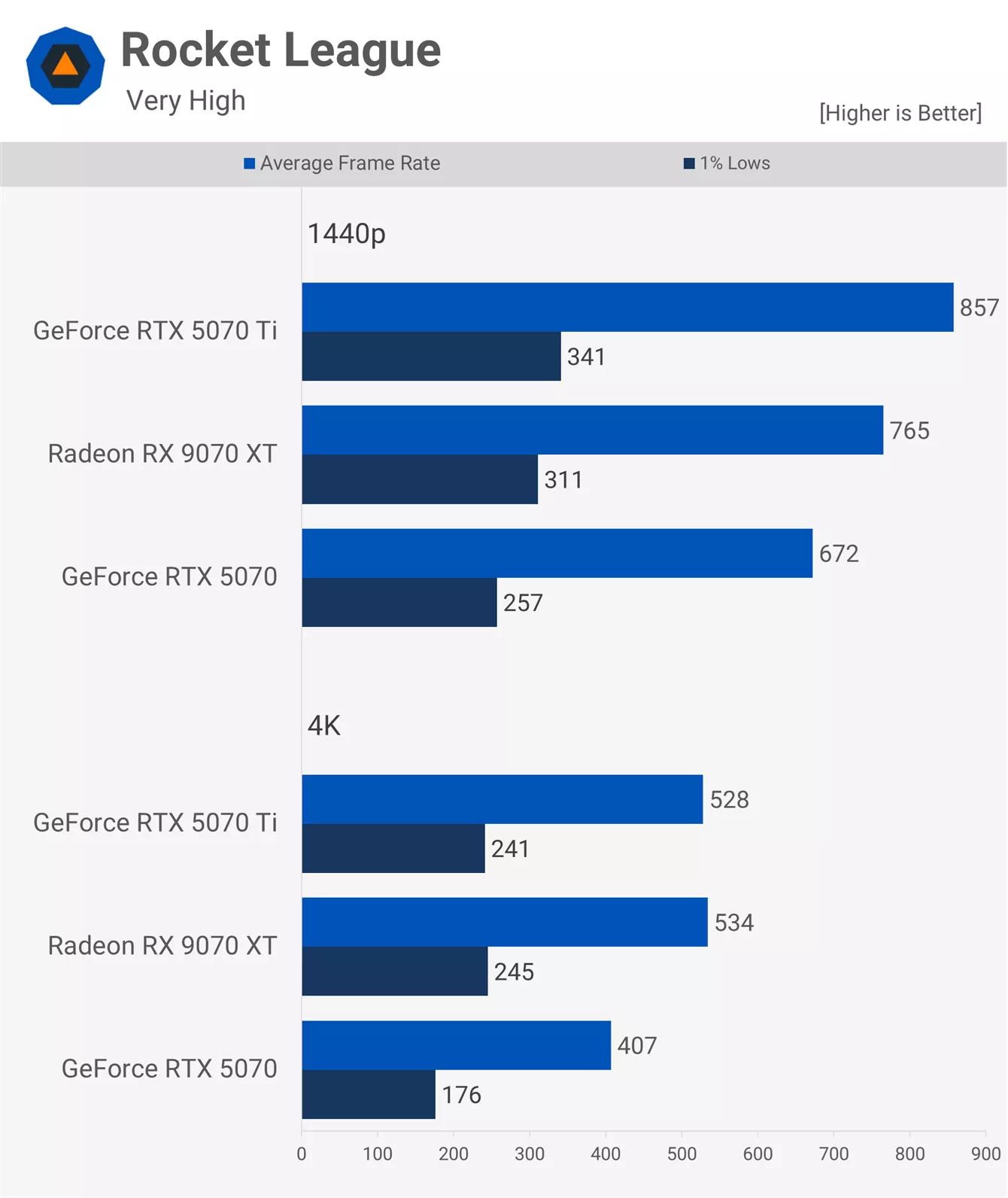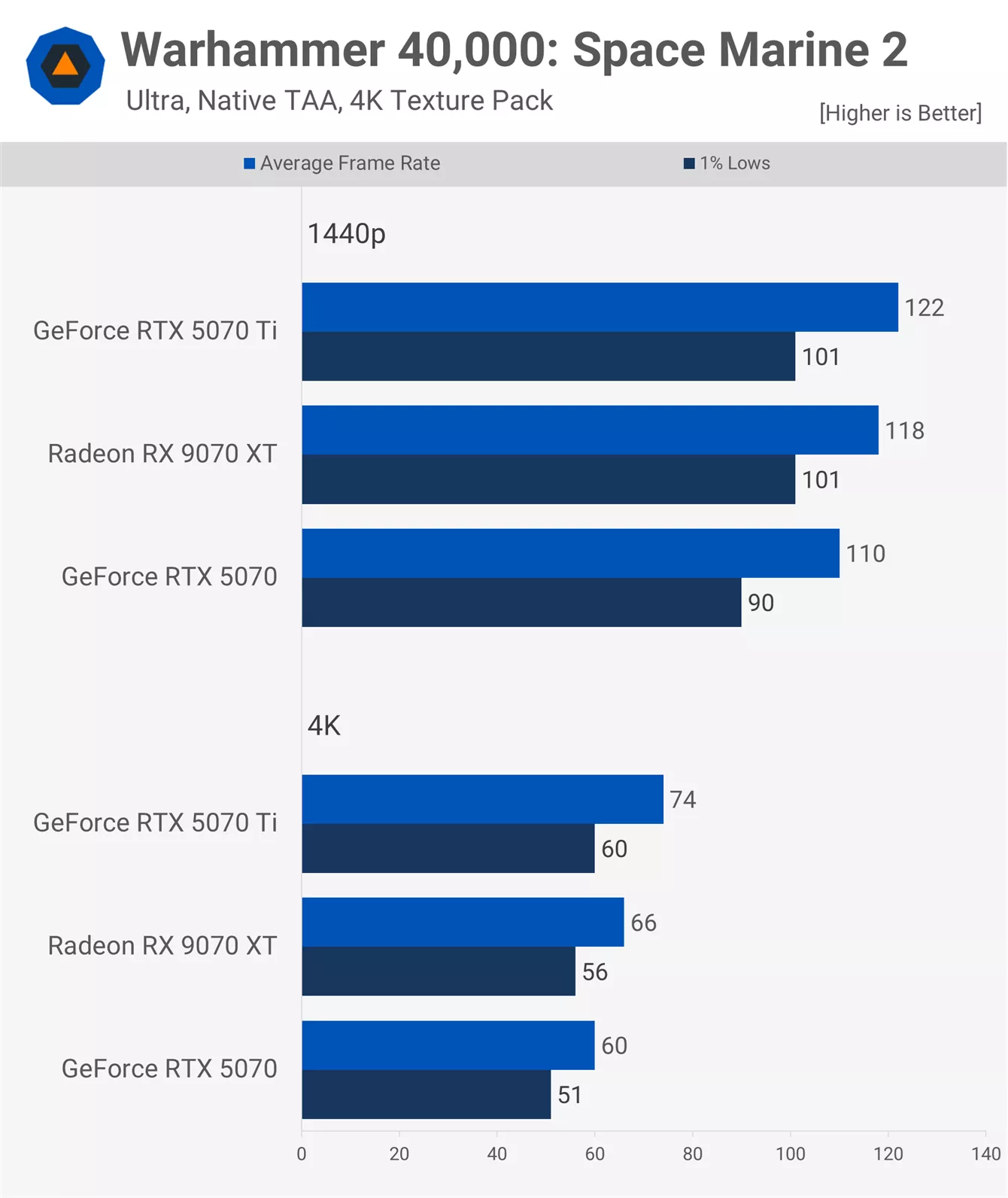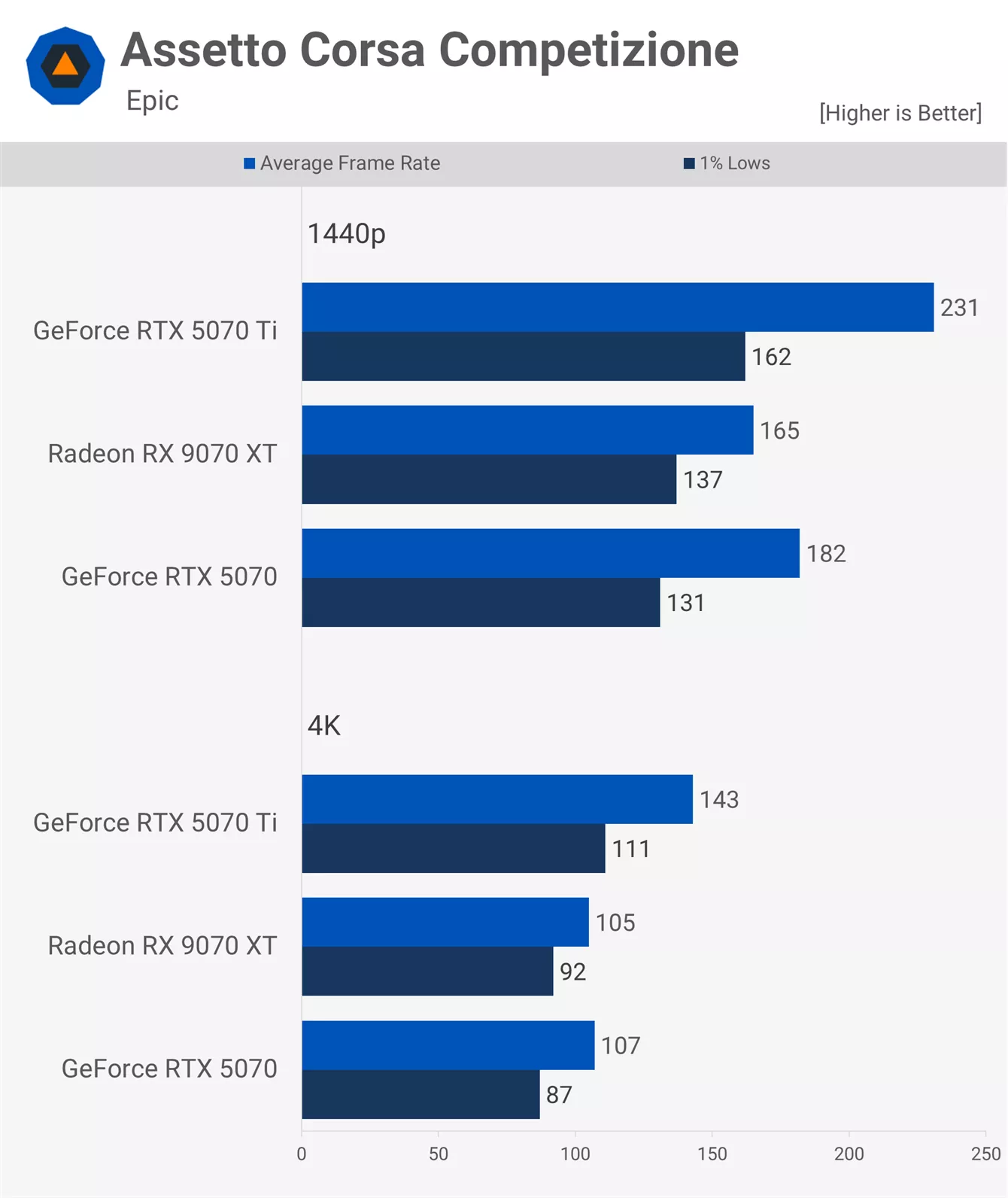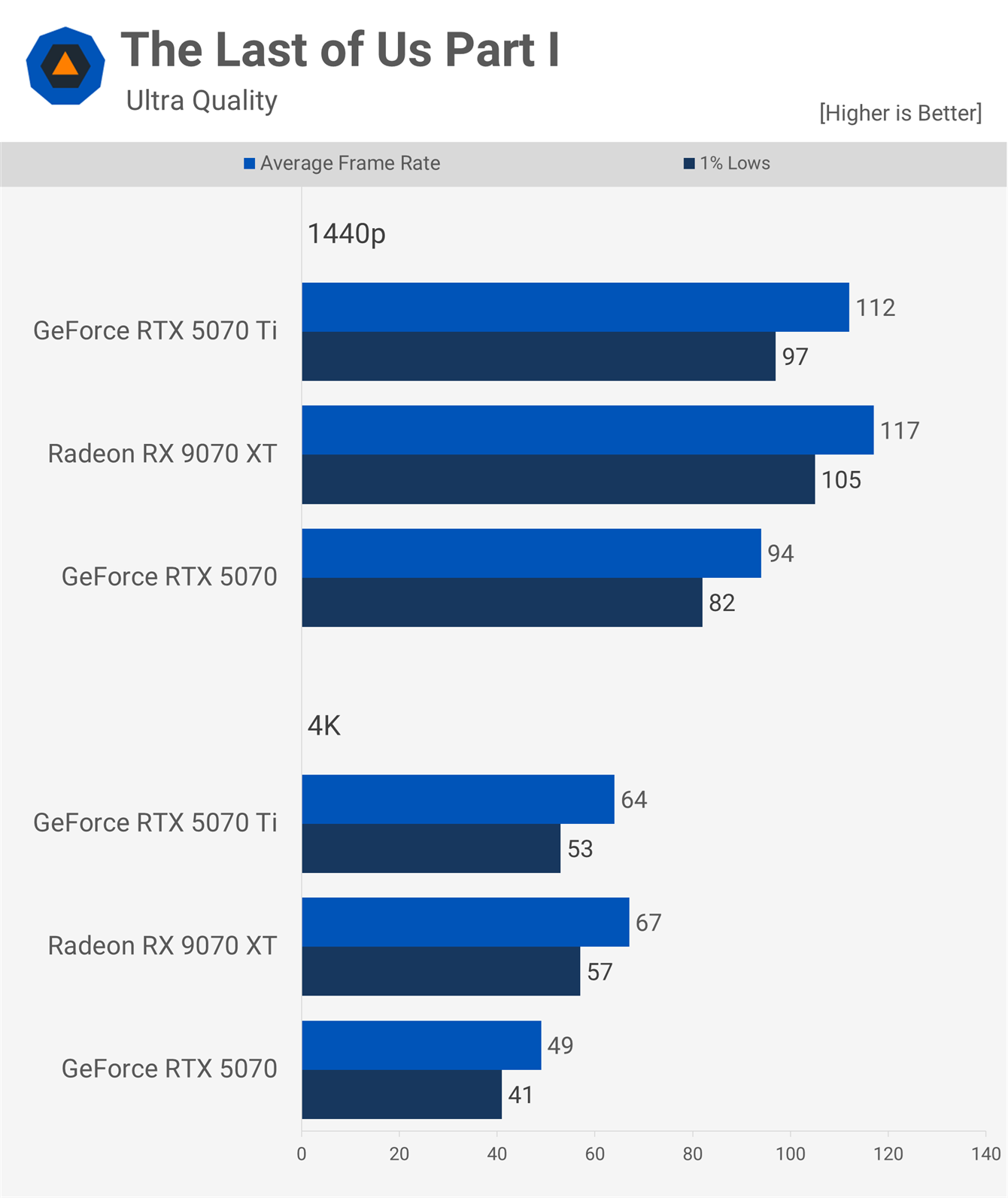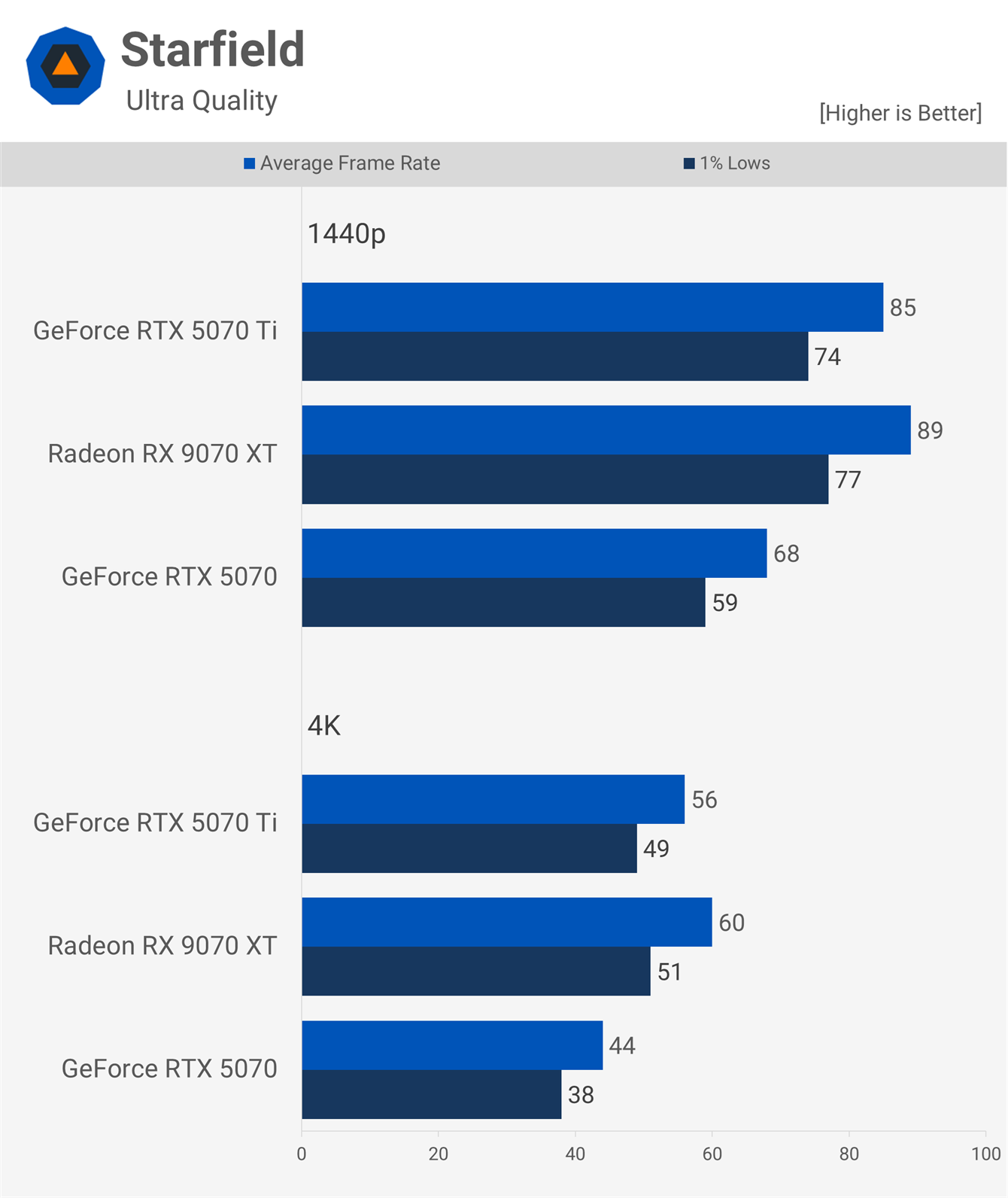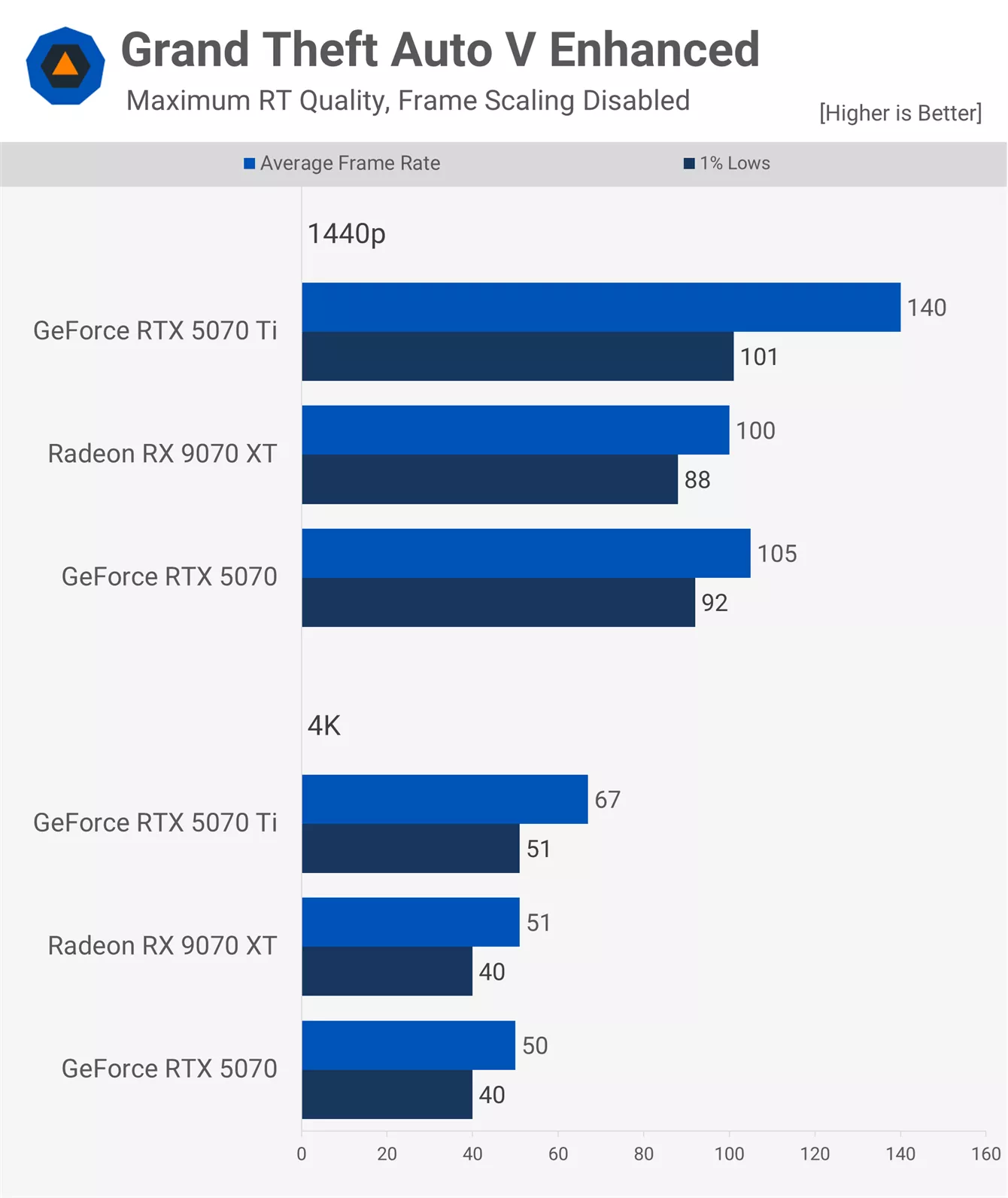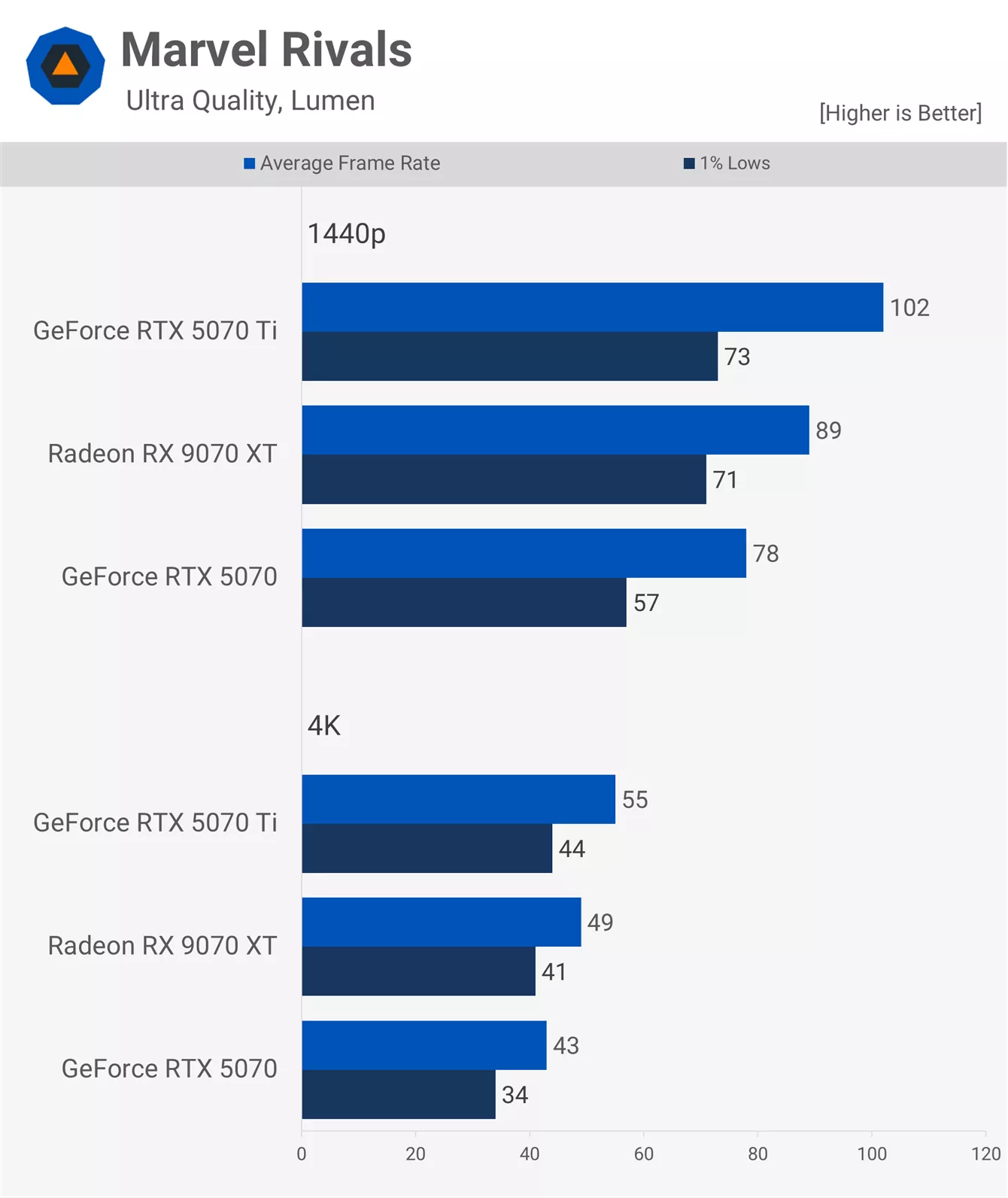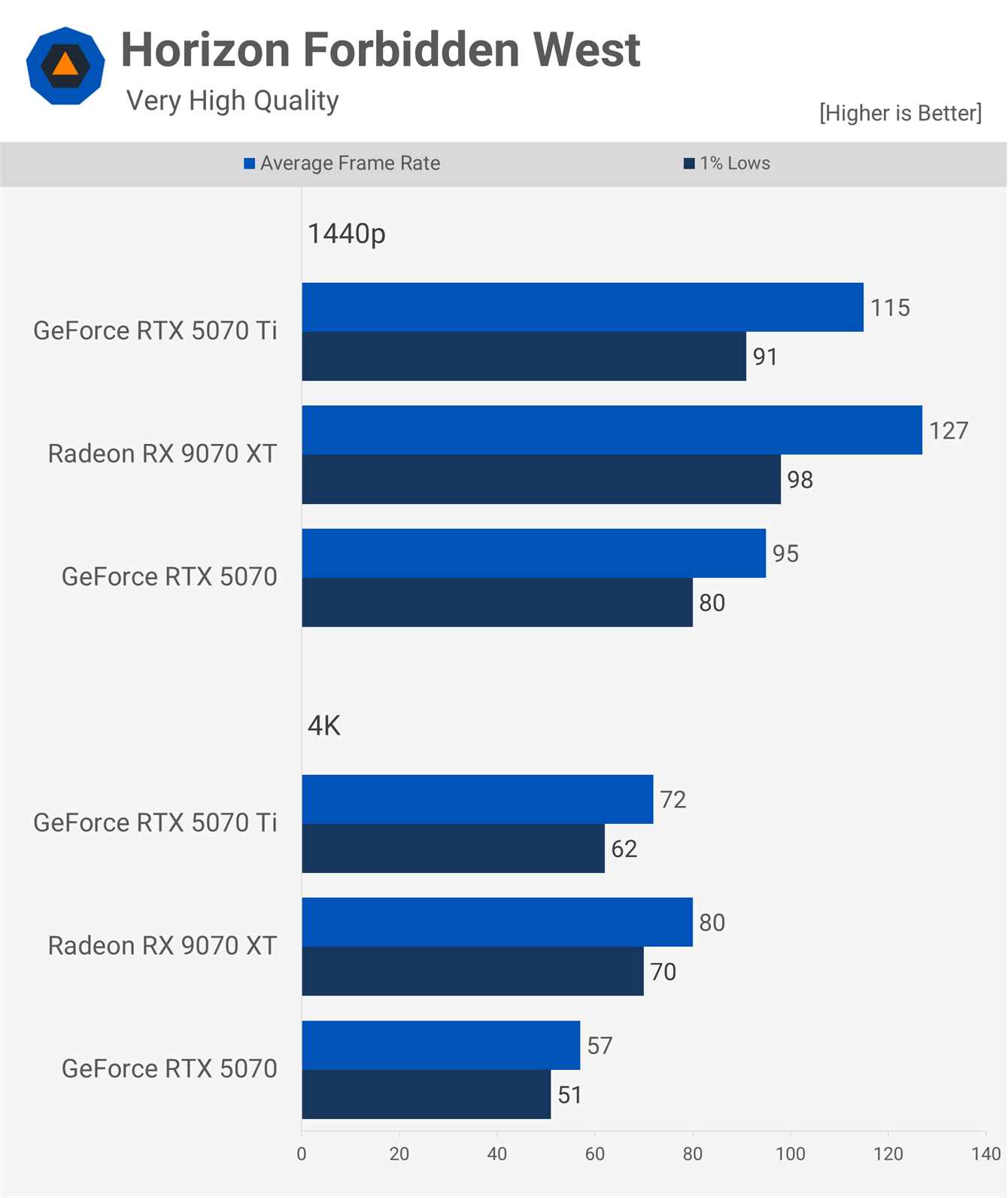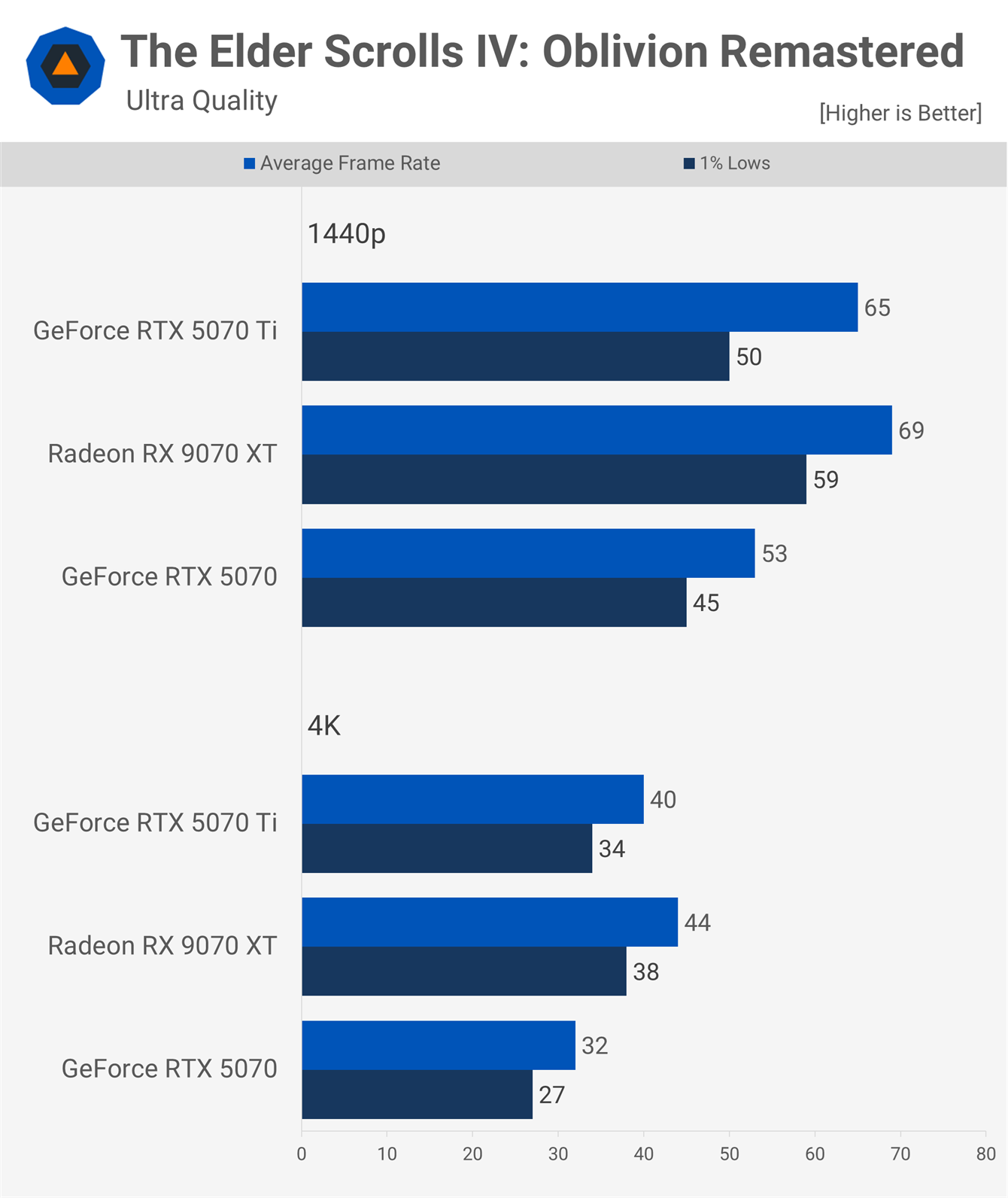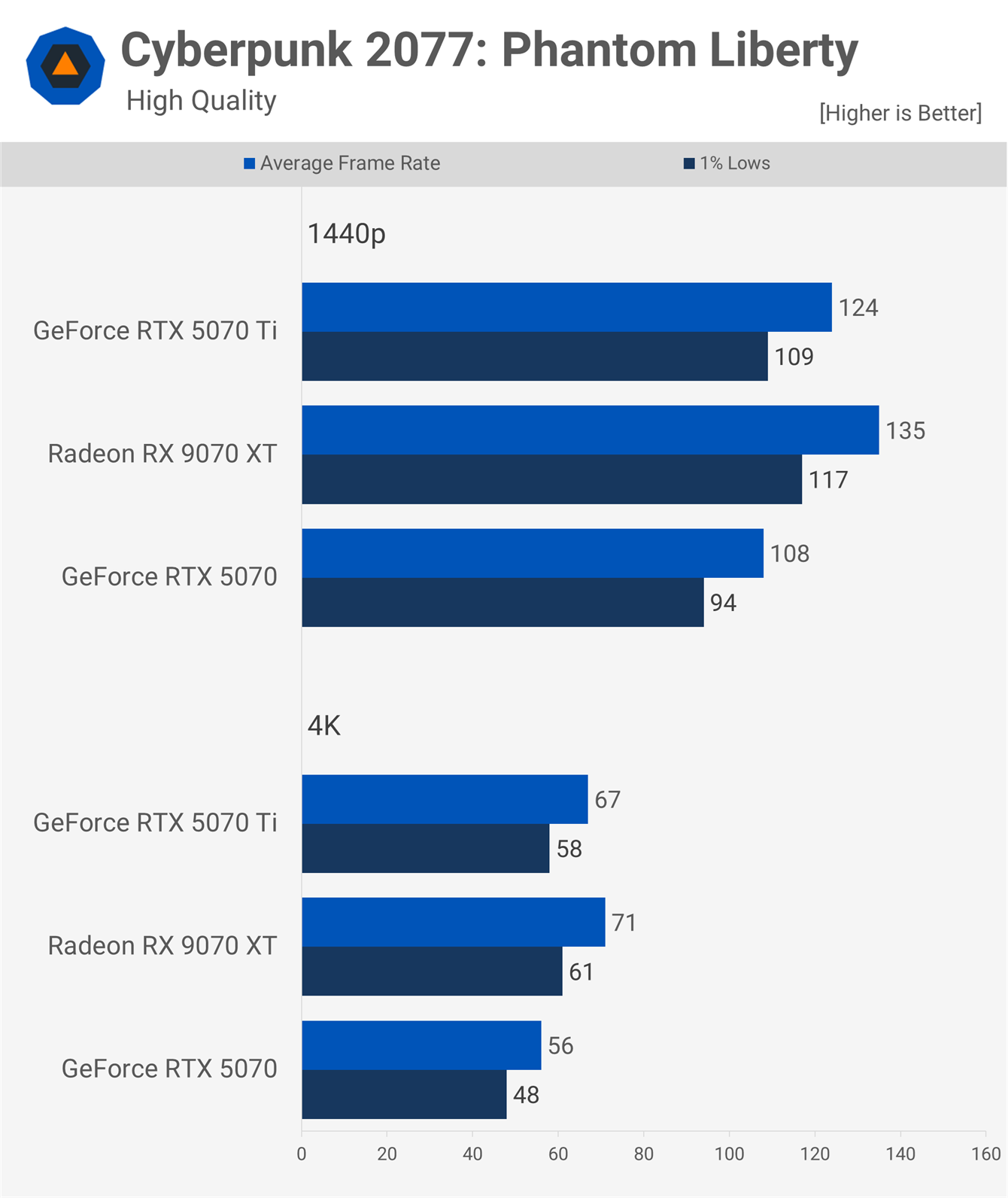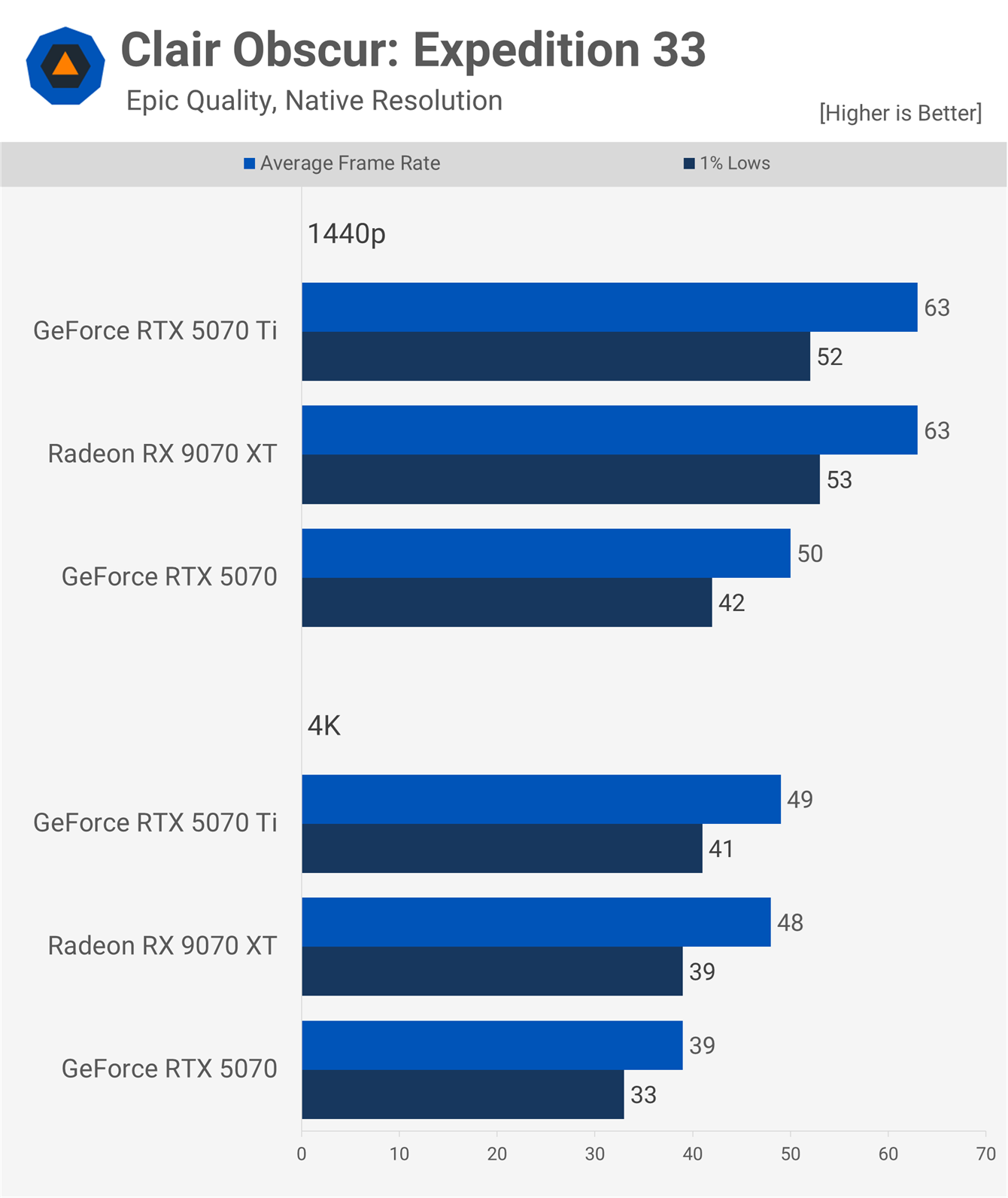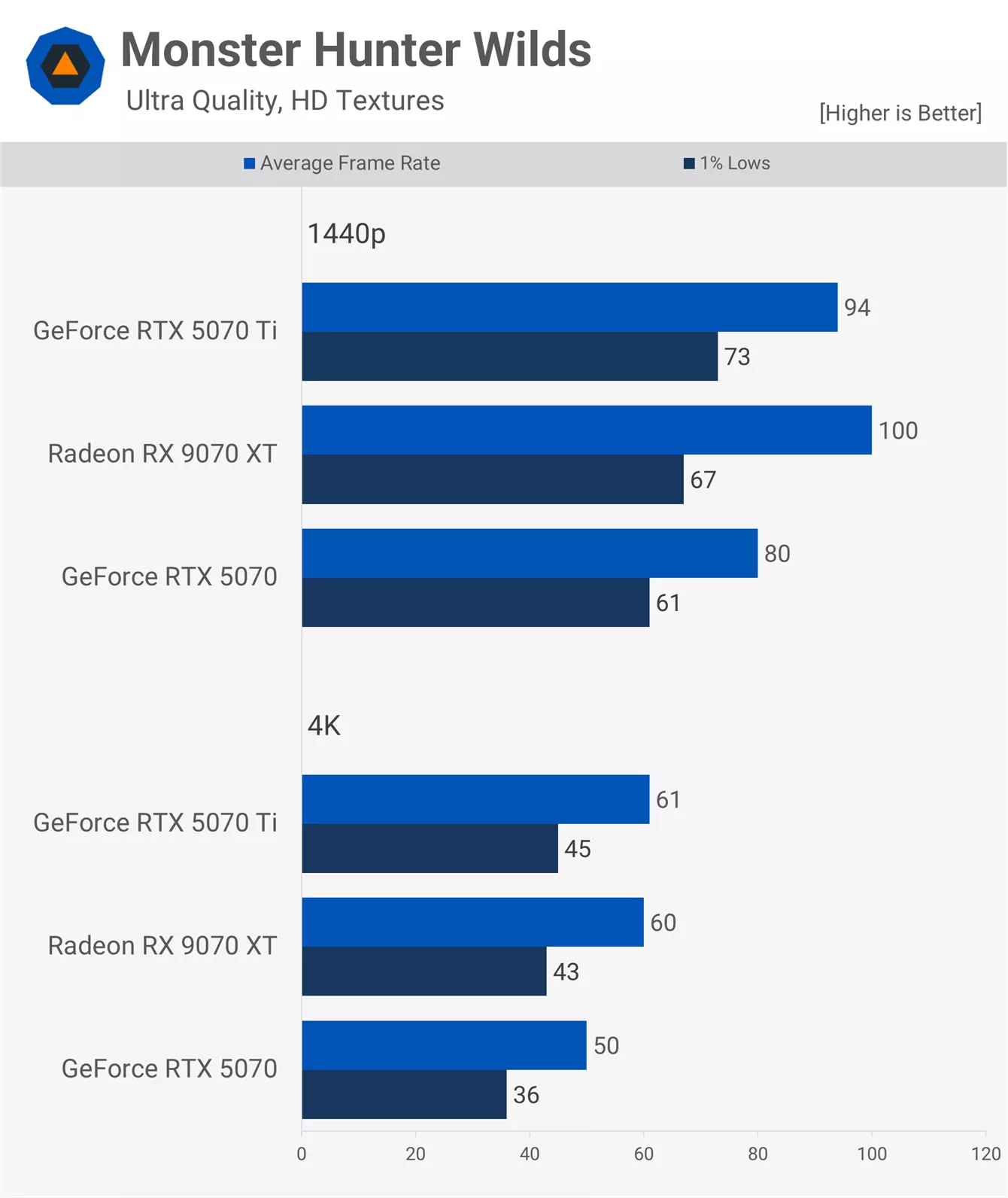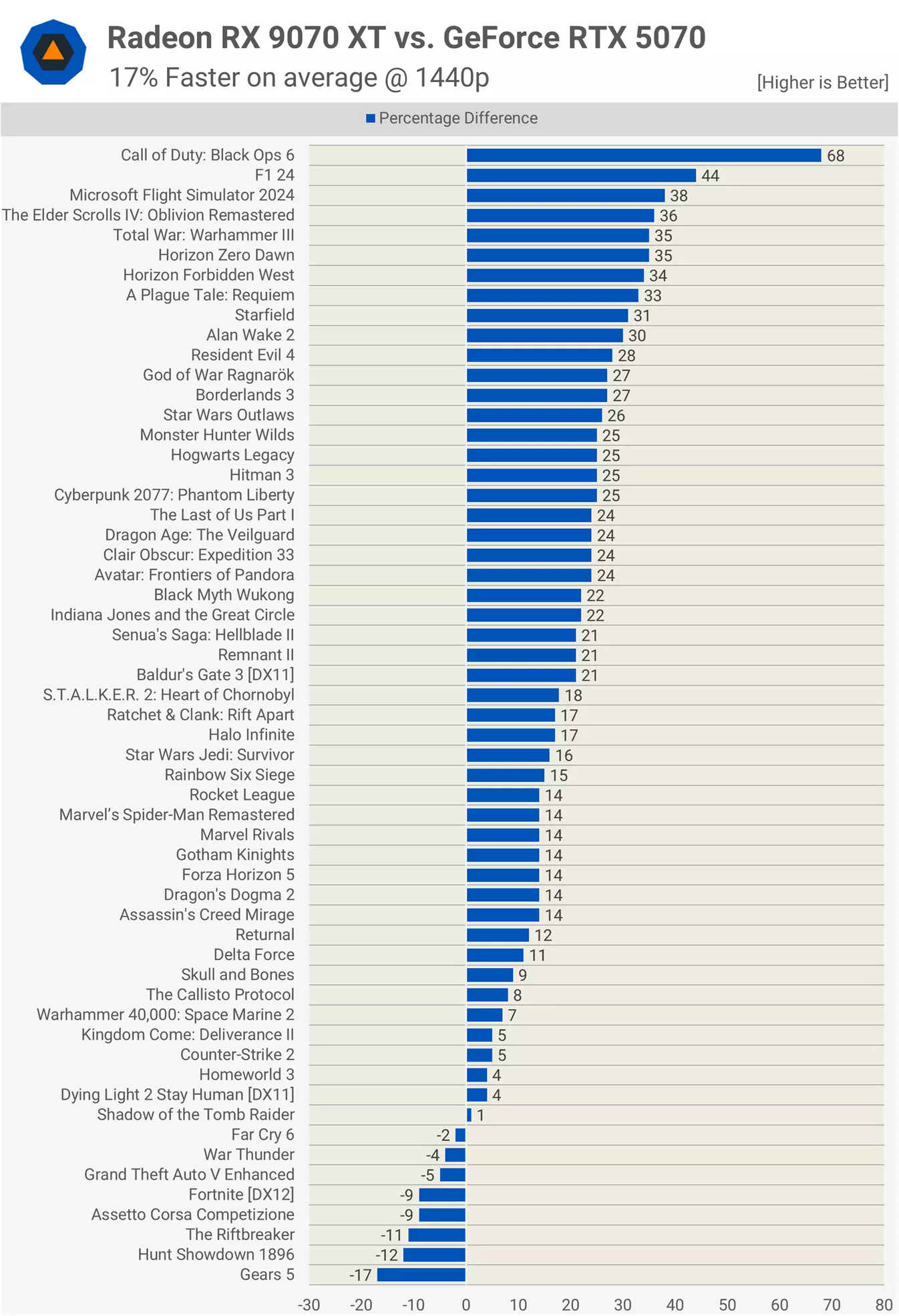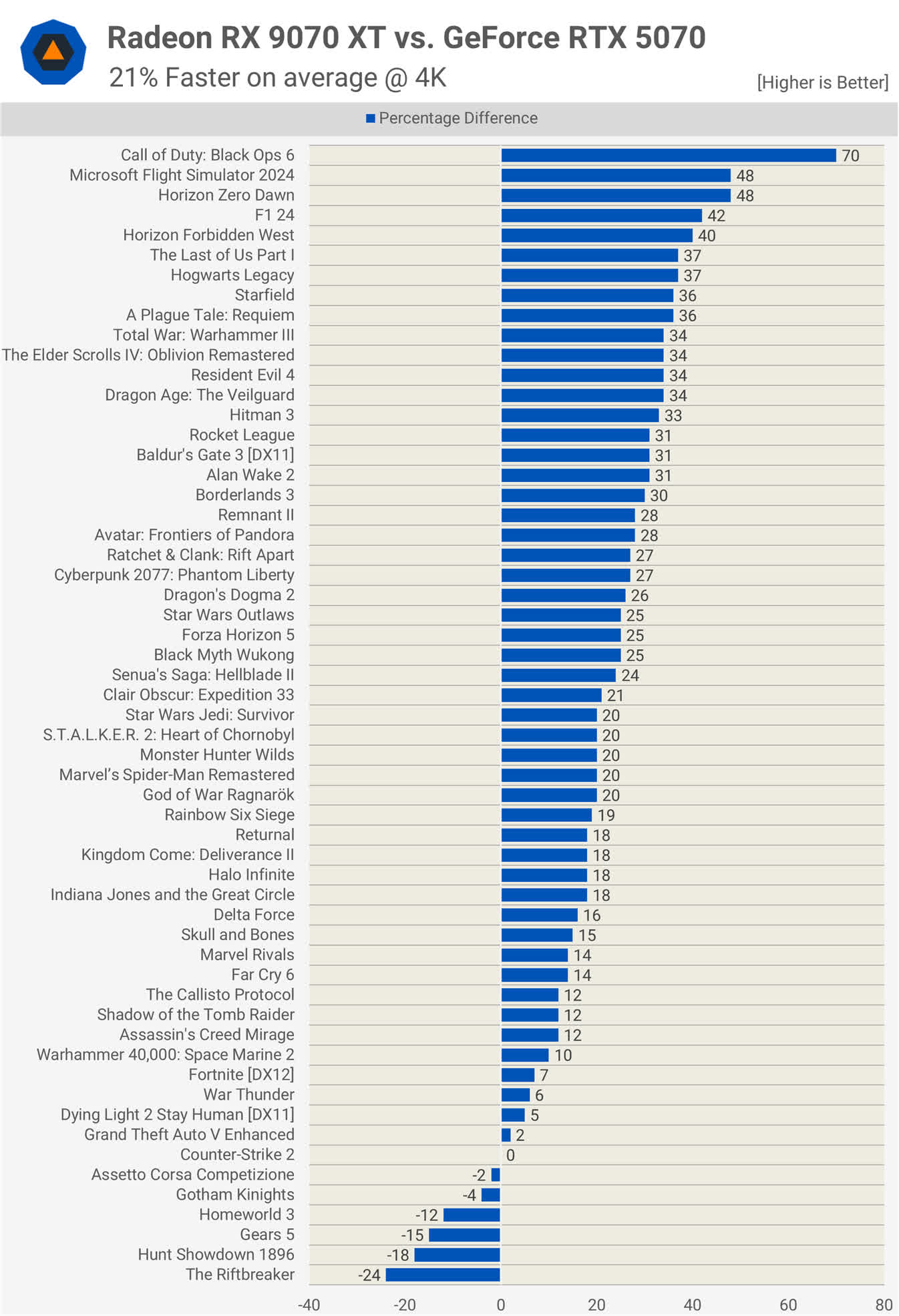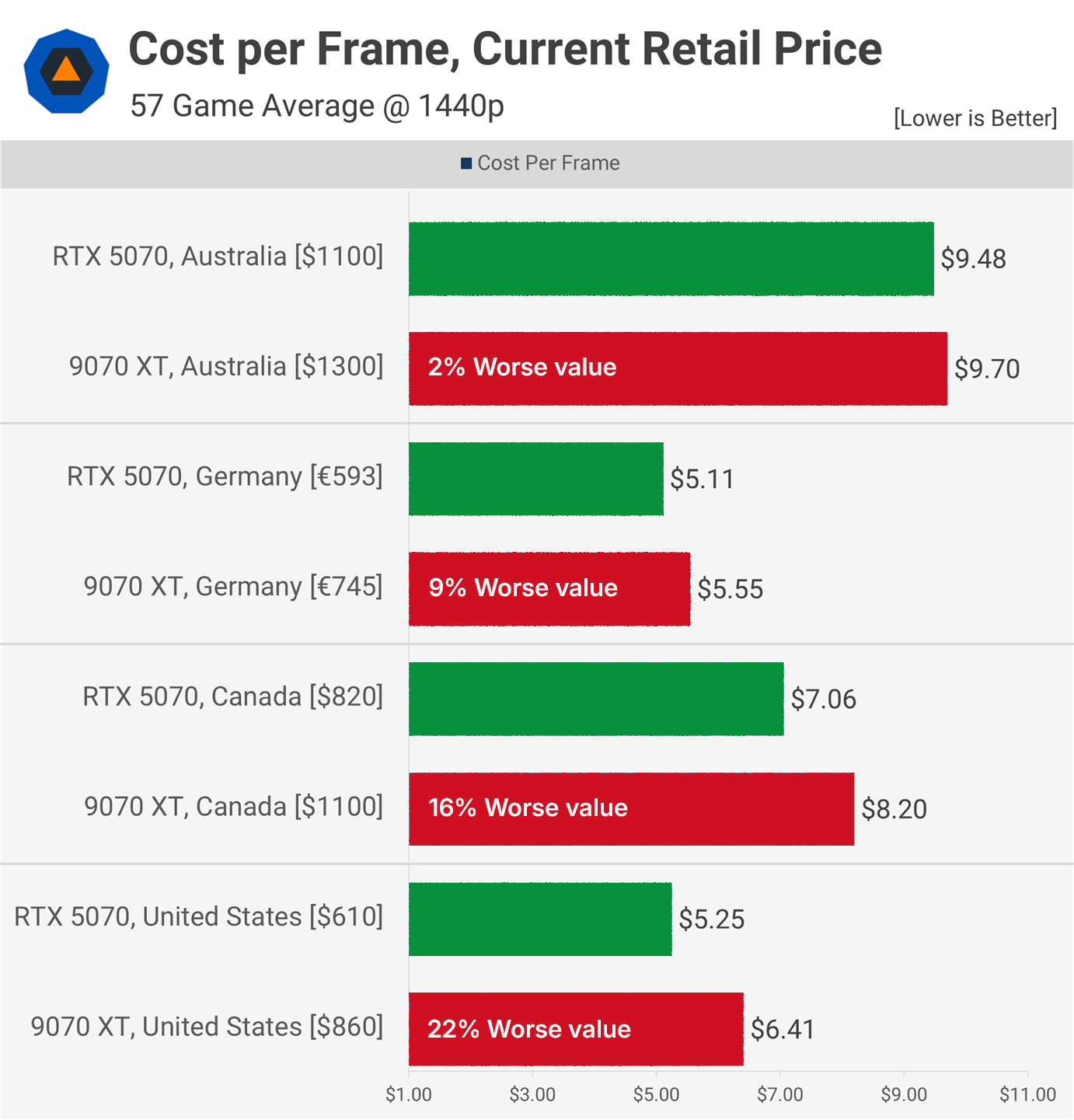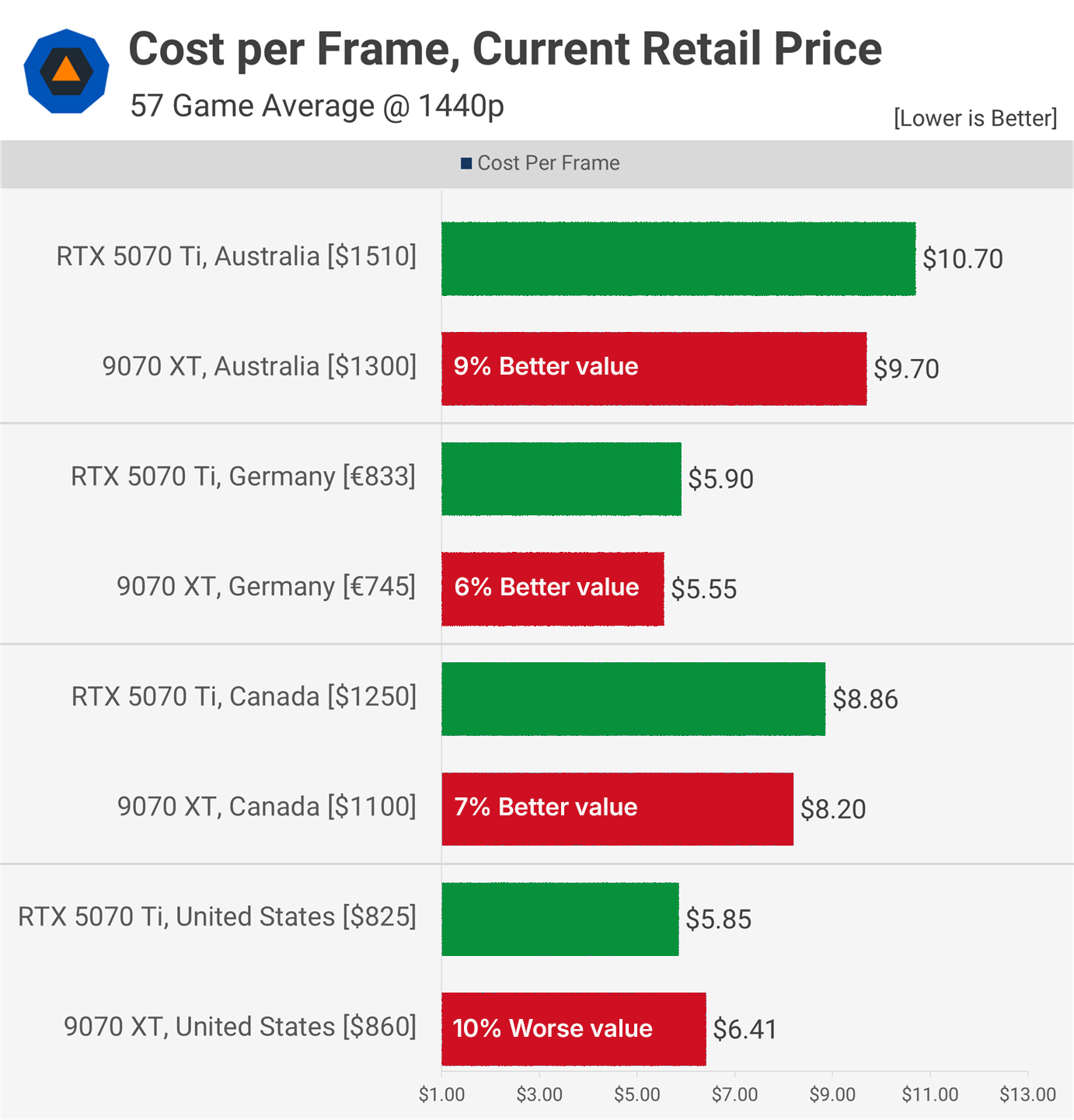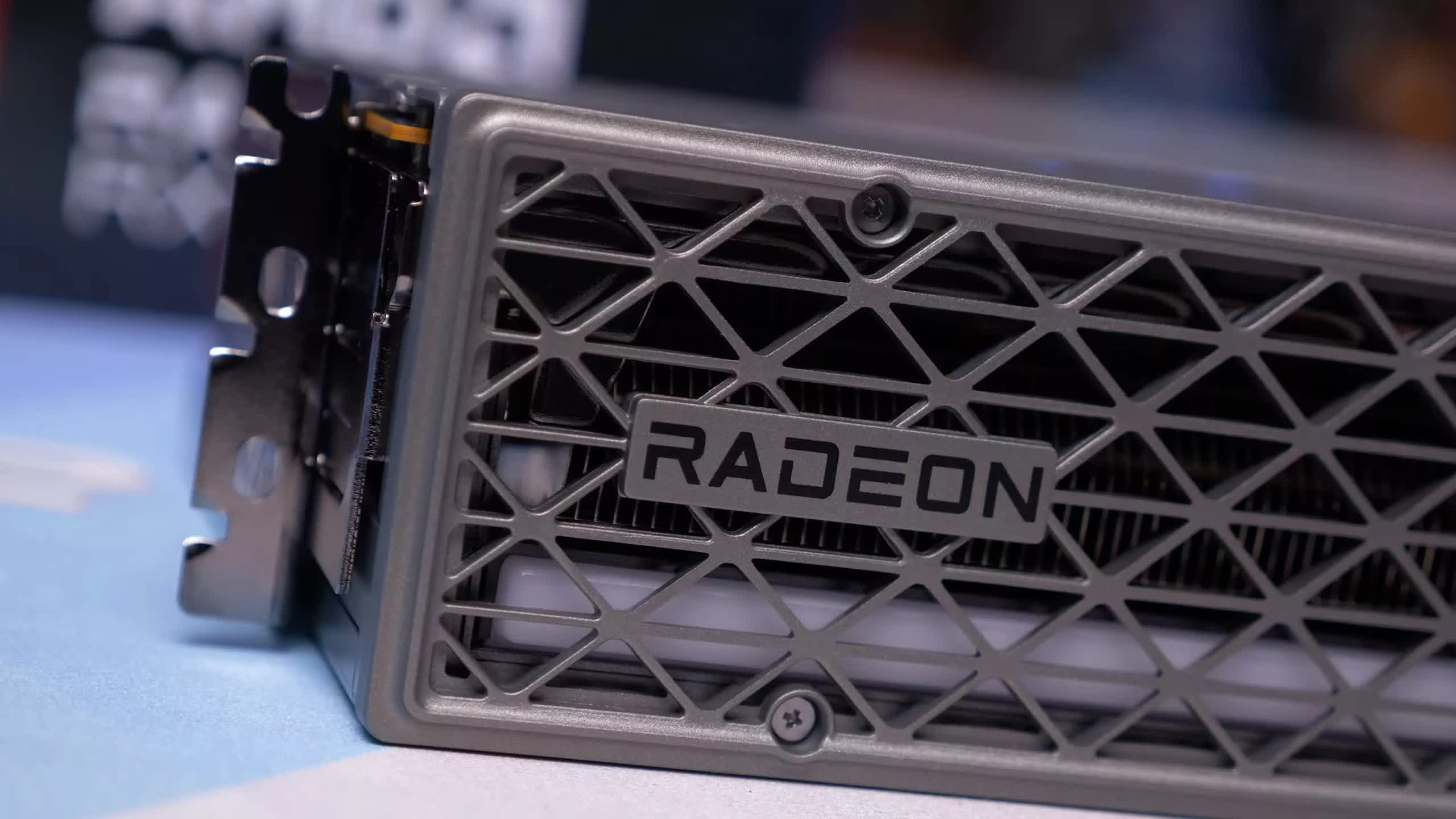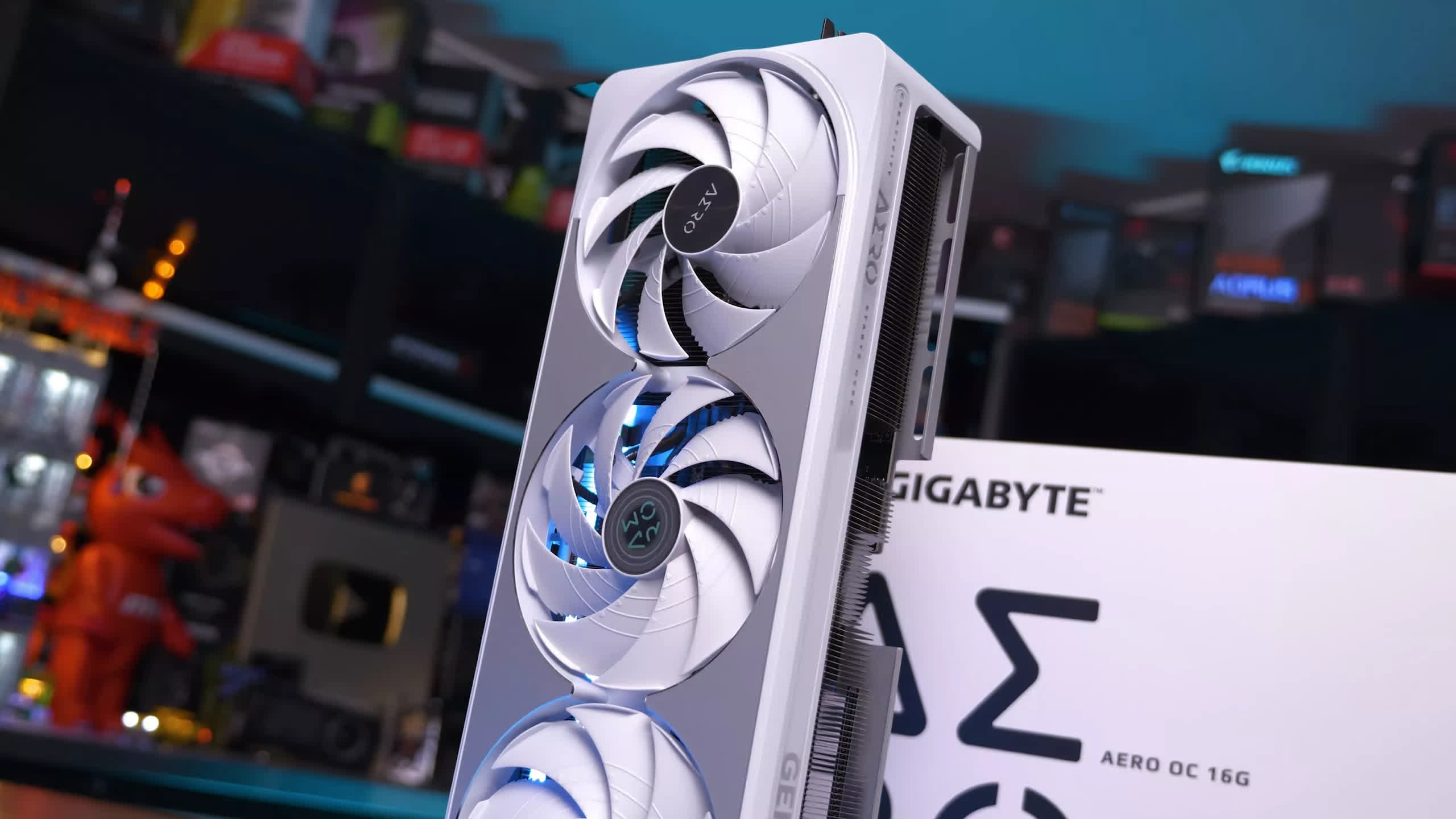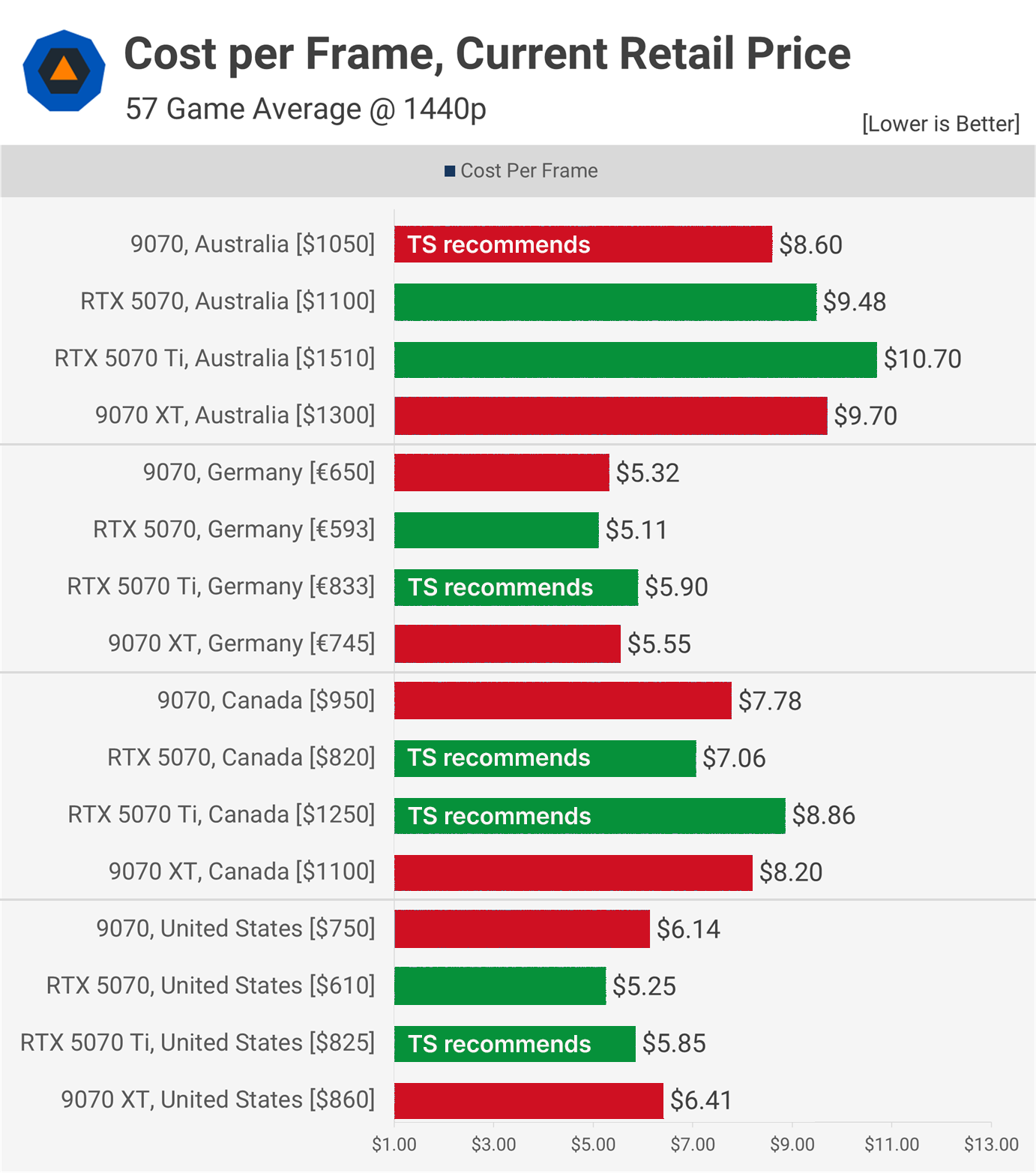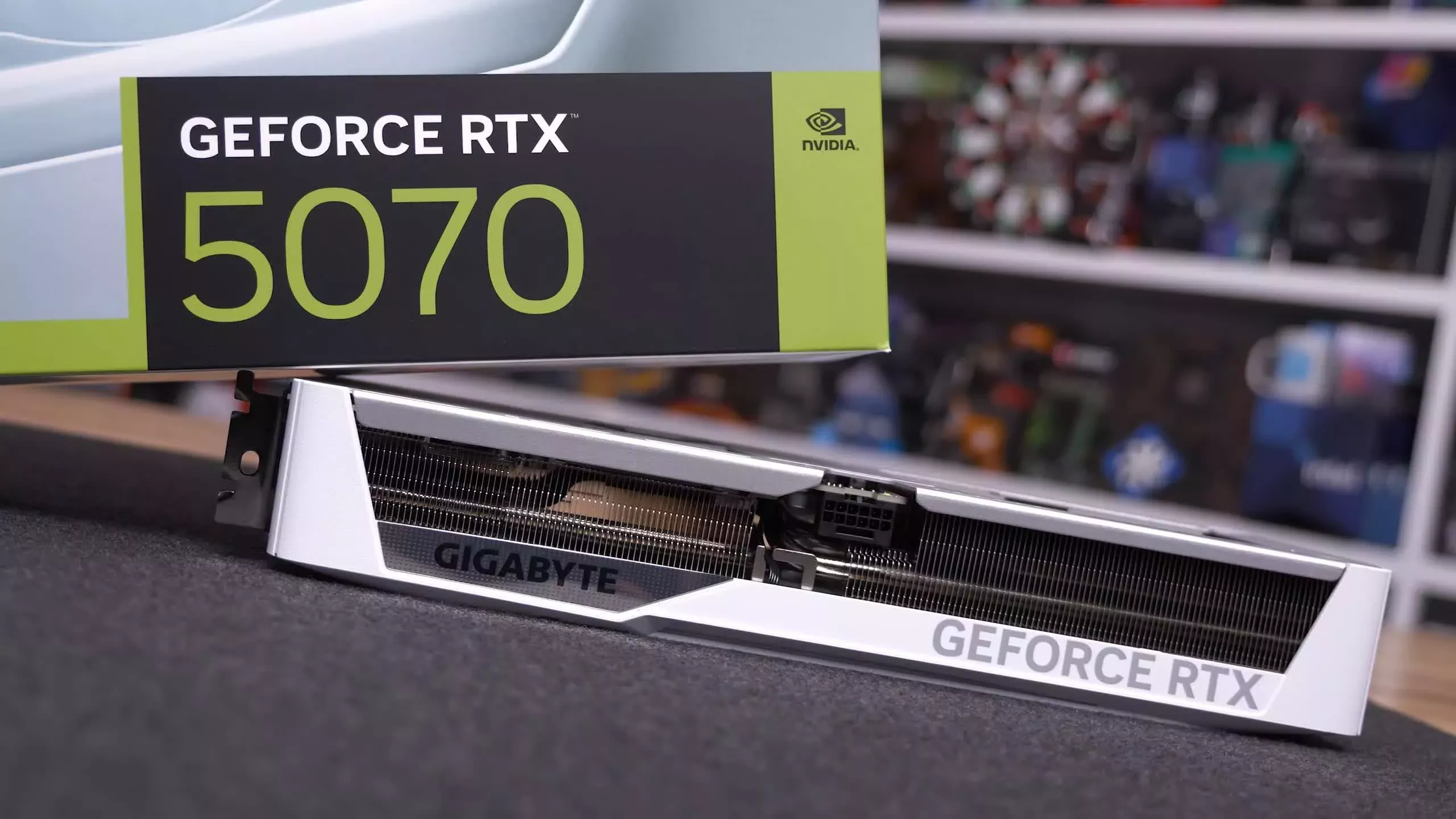When AMD launched the Radeon RX 9070 XT, it was positioned as a direct rival to Nvidia's GeForce RTX 5070. But in the world of graphics cards, real-world pricing often tells a different story than marketing intentions. And when we first put the 9070 XT to a head to head test in 55 games, it wasn't against the 5070 – it was up against the more powerful 5070 Ti.
Predictably, some were upset with that decision, but there was a reason: at the time, AMD's card was priced closer to the Ti variant, and we were curious how it would fare against the tougher competition. The Radeon came in about 5% slower in performance, but roughly 17% cheaper based on what people were actually paying – not the manufacturer's suggested price.
Now, it's time for the head-to-head matchup that some of you were waiting for: 9070 XT vs. RTX 5070.
Since our last round of testing – 55 games deep at 1440p and 4K – both AMD and Nvidia have rolled out driver updates that fine-tuned performance across several titles.
Meanwhile, GPU prices have shifted significantly. The RTX 5070 is settling closer to its MSRP, with cards available for around $610, while the 5070 Ti is now hovering at $825. Surprisingly, the Radeon 9070 XT has gone in the opposite direction – currently selling for about $860 in the US, a full 41% more than the RTX 5070 and even pricier than the faster 5070 Ti.
That's been a surprising turn, especially considering it also represents a 4% premium over the 5070 Ti, despite being 5% slower on average and offering a weaker feature set.
It's a similar story around the globe, with price gaps varying by region but consistently putting the 9070 XT at a premium over the 5070. In Germany, the Radeon 9070 XT costs 745 euros, making it 11% cheaper than the 5070 Ti but still 26% more expensive than the 5070.
That's an improvement compared to what we see in the US, but ideally, the 9070 XT should be at least 20% cheaper than the 5070 Ti and only about 10% more expensive than the 5070.
In Canada, the 9070 XT is priced at $1,100, which is 12% cheaper than the 5070 Ti, but also 34% more than the RTX 5070. Meanwhile, in Australia, both the 5070 and 5070 Ti are available at local MSRP (RRP). At $1,300 AUD, the 9070 XT costs 14% less than the 5070 Ti and 18% more than the 5070.
In short, that means the 9070 XT costs 41% more than the 5070 in the US, 34% more in Canada, 26% more in Germany, and 18% more in Australia.
So, with the latest drivers in play, how much faster is the 9070 XT than the RTX 5070?
We're about to find out with a massive 57-game benchmark covering 1440p and 4K resolutions. We won't walk through every game individually – instead, we'll dive into the key highlights and deliver a comprehensive performance breakdown. Let's get started.
Test System Specs
| CPU | AMD Ryzen 7 9800X3D |
| Motherboard | MSI MPG X870E Carbon WiFi (BIOS 7E49v1A23 - ReBAR enabled) |
| Memory | G.Skill Trident Z5 RGB DDR5-6000 [CL30-38-38-96] |
| Graphics Cards | Radeon RX 9070 XT GeForce RTX 5070 Ti GeForce RTX 5070 |
| ATX Case | MSI MEG Maestro 700L PZ |
| Power Supply | Kolink Regulator Gold ATX 3.0 1200W |
| Storage | TeamGroup T-Force Cardea Z44Q 4TB |
| Operating System | Windows 11 24H2 |
| Display Driver | Nvidia GeForce Game Ready 576.40 AMD Radeon Adrenalin 25.5.1 |
Benchmarks
Call of Duty: Black Ops 6
Since our previous testing, the performance of the 9070 XT has improved by 14% at 1440p and 9% at 4K in Black Ops 6, giving the Radeon GPU a significant performance advantage over not just the RTX 5070, but also the 5070 Ti. We're seeing a 68% increase at 1440p and 70% at 4K compared to the 5070.
Hunt: Showdown 1896
Unfortunately, performance has only improved by a few frames in Hunt: Showdown 1896, and as a result, the 9070 XT is much slower than the RTX 5070 – trailing by 12% at 1440p and 18% at 4K. We're testing using the maximum in-game quality settings at native resolution.
Rocket League
The latest GeForce driver has improved performance in Rocket League. The 5070 Ti is now 12% faster than the 9070 XT, with similar results at 4K. Compared to the standard 5070, the 9070 XT is 14% faster at 1440p and 31% faster at 4K.
Warhammer 40,000: Space Marine 2
The updated GeForce driver has resolved performance issues previously observed in Space Marine 2, and Radeon performance has also improved. As a result, the 9070 XT is 7% faster than the RTX 5070 at 1440p and 10% faster at 4K.
Assetto Corsa Competizione
Performance has improved for the 9070 XT in Assetto Corsa Competizione with the new driver. Even so, the 5070 Ti remains much faster. The 9070 XT only manages to match the 5070 at 4K while ending up 9% slower at 1440p.
The Last of Us Part I
In The Last of Us Part I, the 9070 XT was 24% faster than the RTX 5070 at 1440p and 37% faster at 4K – a strong result for AMD, as the 9070 XT also outpaced the Ti model.
Starfield
The 9070 XT is particularly strong in Starfield, outperforming the 5070 Ti at both tested resolutions. It's 31% faster than the 5070 at 1440p and 36% faster at 4K, making this an easy win for AMD.
Grand Theft Auto V Enhanced
For Grand Theft Auto V Enhanced, please note we're using the maximum RT quality preset with scaling disabled, meaning all results reflect native resolution. If you enable the preset without adjusting settings, resolution scaling will be turned on by default, increasing FPS.
Here, the 9070 XT doesn't perform particularly well relative to the GeForce GPUs. It was 5% slower than the RTX 5070 at 1440p and only 2% faster at 4K.
Marvel Rivals
In Marvel Rivals, the 9070 XT sits between the 5070 and 5070 Ti, offering 14% better performance than the 5070 at both 1440p and 4K. It's a solid showing compared to the 5070, though still behind the Ti variant.
Horizon Forbidden West
The 9070 XT delivers excellent results in Horizon Forbidden West, comfortably beating the RTX 5070 Ti. It's 34% faster than the 5070 at 1440p and 40% faster at 4K, averaging 80 FPS.
The Elder Scrolls IV: Oblivion Remastered
Oblivion Remastered also runs well on the 9070 XT, hitting 69 FPS at 1440p and beating the RTX 5070 by 30%. At 4K, it averaged 44 FPS, giving it a 38% lead.
Cyberpunk 2077
For Cyberpunk 2077, we're using the high preset with upscaling disabled, so results reflect native resolution performance. The 9070 XT delivered 25% higher performance than the RTX 5070 at 1440p and 27% higher at 4K.
Clair Obscur: Expedition 33
Clair Obscur: Expedition 33 is one of the newest titles in this test. Here, the 9070 XT roughly matches the 5070 Ti, coming in 24% faster than the RTX 5070 at 1440p and 21% faster at 4K.
Monster Hunter Wilds
The 9070 XT performs well in Monster Hunter Wilds, offering 25% better performance than the RTX 5070 at 1440p and 20% better at 4K – clearly positioning it a tier above the similarly priced RTX 5070.
57 Game Performance Summary
1440p Average
At 1440p across the 57 games tested, the 9070 XT was, on average, 17% faster than the RTX 5070. That would be impressive if both cards were available at MSRP, considering the Radeon GPU should cost just 9% more.
However, in Australia it costs 18% more, and pricing in other major regions is typically 30 – 40% higher, meaning the 9070 XT currently represents poor value.
4K Average
The 4K results are only slightly more favorable. The 9070 XT was 21% faster on average compared to the RTX 5070. Again, in Australia it costs 18% more, and in regions such as Canada, Germany, and the US, it is priced significantly higher than the RTX 5070.
Cost Per Frame (versus RTX 5070)
Let's take a look at how the 9070 XT compares to the RTX 5070 in terms of cost per frame across four regions. In Australia, the 9070 XT ends up being slightly worse value than the RTX 5070 – just by a few percent – so in practical terms, they're nearly identical in value.
The 9070 XT does offer more VRAM, while the 5070 features DLSS 4, which has an edge over FSR 4, primarily due to broader adoption.
In Germany, the 9070 XT is 9% worse in value, and in Canada and the US, it's a complete blowout, with the Radeon GPU offering 16 – 22% worse value. In those regions, it's essentially a non-starter.
Cost Per Frame (versus RTX 5070 Ti)
When compared with the GeForce RTX 5070 Ti, the Radeon 9070 XT becomes even less compelling. Current pricing shows the 9070 XT offering just 9% better cost-per-frame value in Australia, 6% in Germany, 7% in Canada, and remarkably, it's actually 10% worse in the US.
Even in regions where the 9070 XT technically offers better value than the 5070 Ti, the margin is in the single digits – far short of the 20% improvement that would be needed to make it a clearly better option.
Are GeForce owners really going to switch to Radeon for less than a 10% savings? We already know the answer to that. If pricing and availability continue in this direction, Radeon sales are going to slow down fast.
Who Wins?
So there you have it. Across a wide range of games, the 9070 XT is around 20% faster than the RTX 5070, putting it in a higher performance tier. That would be great news for AMD if both GPUs were available at MSRP.
In that case, the Radeon 9070 XT would cost about 10% more while offering 20% more performance. You could also reasonably overlook the GeForce GPU's advantages – such as better upscaling support and superior ray tracing performance – mainly because the latter is hindered by the RTX 5070's limited 12GB of VRAM, which we expect to become a significant limitation in the coming years.
However, as we've just seen, AMD has not been able to maintain its MSRP – something we anticipated in our day-one review. At the time, we reported that AMD was heavily subsidizing the initial batches of product to meet the advertised MSRP, while board partners told us that the actual MSRP for many models was much higher. Here's what we said in that review:
... we have some concerns about how "real" the $600 MSRP actually is. After some investigation, it appears that AMD is providing retailers with a $50 rebate to achieve the $600 pricing. This strongly suggests the intended MSRP was actually $650, and AMD is temporarily subsidizing models to hit the lower price point.
For example, XFX confirmed that the 9070 XT Mercury – a model featured in this review – will not cost $650. In fact, it won't even cost $700. Instead, the official MSRP is $770, and due to tariffs, its on-shelf price is expected to be $850 – which would be tragic if true.
From what we've gathered, it seems AMD is starting to play Nvidia's pricing game. This means that while some 9070 XT models may be available at $600 initially, most will likely be priced higher, and restocks at that price may be limited or infrequent. A lot will depend on how sales perform.
At the time, we predicted that tariffs would push the real price to around $850, based on multiple pre-release sources. Today – two months after launch – the cheapest 9070 XT is $860, which aligns closely with what we were told.
Unfortunately for AMD, this makes things difficult, as Nvidia is now doing better on the pricing front. As we've shown, the RTX 5070 currently offers significantly better value in the US, and even the Ti variant delivers a better cost per frame.
Of course, this depends on the region. In Australia, for example, the RTX 5070 and 9070 XT offer similar value in terms of cost per frame. Given that, we would recommend the 9070 XT locally, primarily because it comes with 16GB of VRAM – which we consider the minimum for any GPU priced at or above $400. That said, the RX 9070 (non-XT), which is nearly 20% cheaper, is the better choice right now in Australia.
However, this doesn't apply to the other regions we analyzed. Remarkably, GeForce GPUs currently offer better value in Germany, Canada, and the US. In Canada, the standard RTX 5070 delivers a 20% better cost per frame than the Ti model, making it a viable option.
Still, we're hesitant to recommend an $820 GPU with just 12GB of VRAM – especially for those planning to play modern titles at maximum settings, using features like ray tracing and frame generation.
So, after a very promising launch, supported by strong initial availability and competitive pricing thanks to months of subsidized inventory, the 9070 series has become a disappointing release, at least based on current pricing. That said, it hasn't yet impacted sales, according to the data we've been able to obtain.
Thanks to the initial hype, the Radeon 9070 XT continues to sell well, locally outperforming the RTX 5070 Ti in terms of units sold. The real issue for AMD is supply, which has kept pricing high. But as it stands today, for the majority of buyers, the GeForce RTX 5070 Ti is the better purchase, and it's the card we recommend over the 9070 XT right now.
